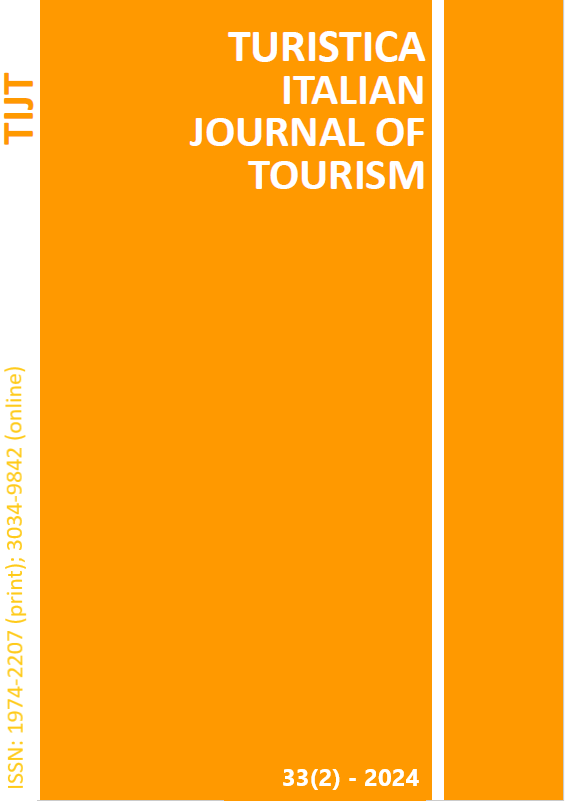Revitalising Abandoned Villages through Rural Tourism: Visitor Motivations and Satisfaction. The Case of Pentidattilo
DOI:
https://doi.org/10.70732/tijt.v33i2.51Keywords:
revisit intention, village-based tourism, tourist satisfaction, rural tourism, PLSAbstract
In recent decades, many rural areas and historic villages in Italy have faced significant challenges, including depopulation and economic decline, particularly in remote regions. This study examines the role of rural tourism as a revitalisation strategy for abandoned villages, analysing how tourism can transform these areas into valuable cultural and economic assets. Specifically, the research aims to explore the relationship between visitor motivations, satisfaction levels, and their intention to return. The borgo of Pentidattilo, located in the Aspromonte National Park, is used as a case study to understand how rural tourism can contribute to the economic, social, and cultural regeneration of marginal areas. The research is based on a survey conducted among visitors to Pentidattilo, using questionnaires and interviews administered both on-site and online. The aim is to gather data on tourists’ motivations, satisfaction, and willingness to return. Data analysis was performed using Structural Equation Modelling (SEM), supported by SmartPLS software, to assess the influence of factors such as the destination’s beauty, essential conditions, and tourism promotion on visitor behaviour. This research highlights the potential of rural tourism in regenerating abandoned villages by fostering authentic, meaningful experiences that enhance visitor satisfaction and encourage repeat visits. The findings contribute to the growing academic discourse on sustainable tourism and offer insights into the role of visitor motivations in shaping tourism experiences. Future research can build upon these results by exploring alternative tourism models and assessing the long-term impact of tourism on local communities. The study suggests that the success of rural tourism in revitalizing villages like Pentidattilo depends on balancing the preservation of cultural and environmental heritage with tourism growth. Tourism operators are encouraged to focus on delivering emotionally engaging experiences that resonate with visitors’ intrinsic motivations, rather than merely improving infrastructure. These insights provide valuable guidelines for developing sustainable tourism strategies that foster long-term visitor loyalty and support the economic development of marginalized rural areas.
Downloads
Published
Issue
Section
Categories
License
Copyright (c) 2025 Giuseppe Avena, Romana Gargano, Luisa Zaccuri

This work is licensed under a Creative Commons Attribution-NonCommercial-NoDerivatives 4.0 International License.
Turistica - Italian Journal of Tourism applies the Creative Commons Attribution (CC BY) license to everything we publish. Developed to facilitate Open Access, this license lets authors maximize the impact or their research by making it available for anyone, anywhere in the world to find, read and reuse. Under this license, authors agree to make articles legally available for reuse, without permission or fees, for virtually any purpose. Anyone may copy, distribute, or reuse these articles, as long as the author and original source are properly cited.

